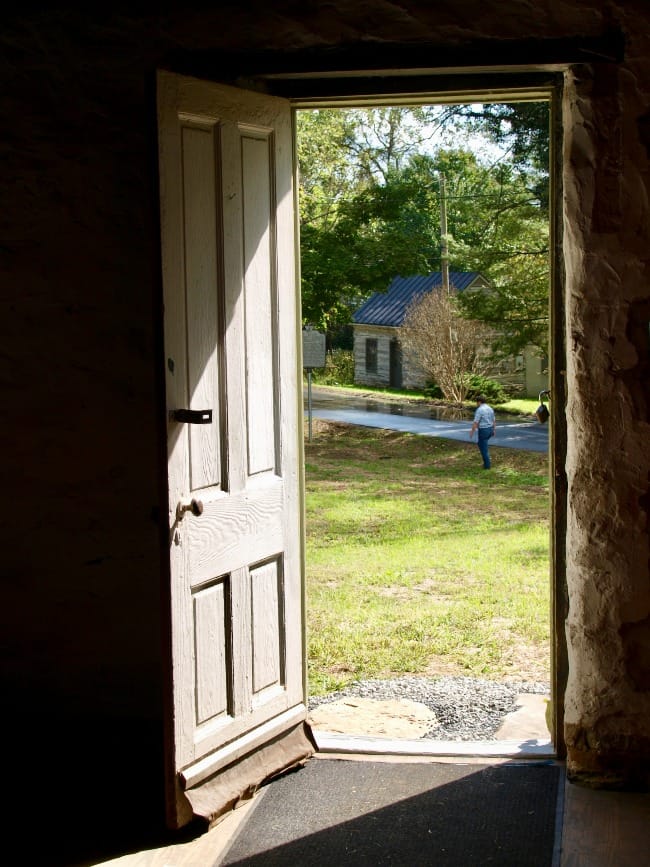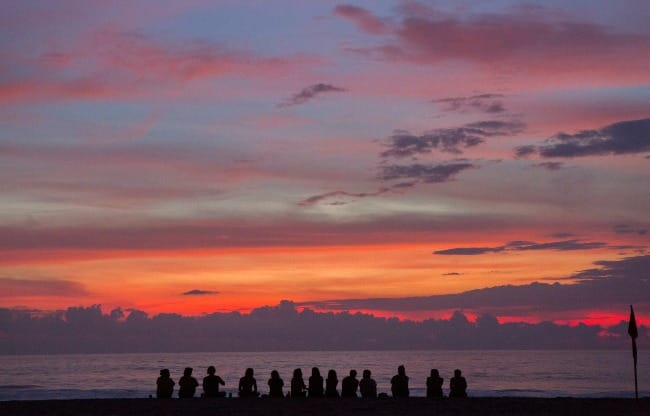Here is the fourteenth installment of our Exodus series. Take a minute to read Exodus 24 HERE. You can access the whole series HERE. As always, we will walk through the text and highlight aspects that are not typically noticed, and then conclude with a few themes for ecological discipleship. Thoughts and comments are welcome. - James.

Consecrated on the Mountain
The Israelite community has been camping in the shadow of Mount Sinai, on which the divine presence has settled in an unsettling manner, complete with thunder, lightning, and a warning not to come too close. But in addition to this display of transcendent glory, God has drawn near to Israel and spoken ten key words (what we call the ten commandments), followed by specific examples of how to apply these commands to everyday life. These instructions constitute a formal invitation to a communal vocation of serving God and furthering God's purposes for creation. When Moses shares God's words and commands with the people, their response is unequivocal: "Everything the LORD has said we will do."
Moses proceeds to construct a place for worship at the foot of the mountain. He builds an altar and sets up twelve stone pillars to represent the twelve tribes. Animals are sacrificed, and their blood is splashed on the altar and sprinkled on the people. While we no longer practice animal sacrifice - rightfully and thankfully - we can appreciate the physical, visceral, and psychological nature of the moment. There is nothing tame or tepid about this worship service. At the foot of a rugged mountain pulsating with divine energy, in a wilderness where life and death are ever-present realities, a blood-speckled people hear the word of God and respond with one voice, "We will do everything the LORD has said; we will obey."
Moses, Aaron, Nadab, Abihu, and seventy elders move higher up the mountain, where they have a direct encounter with God. No words are spoken; it is a moment of awe, wonder, and, I assume, trepidation. The written description is terse and limited; we are only told what God's footstool looks like. It is a real encounter, but it is also shrouded in mystery. Although God had warned them against coming too close, they are not endangered during this encounter. In fact, we are given this short but suggestive line: "they saw God, and they ate and drank." In other words, they communed with God on the mountain.
Moses is invited to keep climbing. "For six days the cloud covered the mountain, and on the seventh day the LORD called to Moses from within the cloud." If you have been following our discussions of Exodus, you will probably note another connection here to the Genesis creation story. God continues the work of creation; here at Sinai, God continues to form a people called to work with God to bring creation to its fulfillment. Moses tastes the fulfillment of this creative moment as he enters the cloud and rests in God's presence on the seventh day. We are told that Moses stays on the mountain forty days and forty nights - another biblical connection that looks back to Noah's creation-preserving experience on the ark - and looks forward to the forty-year sojourn that lies ahead of the people.
God has called, and they have answered. What might this story say to us, as ecological disciples seeking to worship and serve God in our time of great transition and upheaval? Here are two themes to consider.

Find Altars in the World
In her brilliant book, An Altar in the World, Barbara Brown Taylor articulates a longing shared by many Christians who find themselves dissatisfied with the status quo. Despite the deep meaning that church-based life brought Taylor (an Episcopal priest) and her community,
"...some of us were not satisfied with our weekly or biweekly encounters with God. We wanted more than set worship services or church work could offer us. We wanted more than planning scavenger hunts for the youth group, more than polishing silver with the altar guild, more than serving on the outreach committee or rehearsing anthems with the choir. We wanted More. We wanted a deeper sense of purpose. We wanted a stronger sense of God's presence. We wanted more reliable ways both to seek and to stay in that presence - not for an hour on Sunday morning or Wednesday afternoon but for as much time as we could stand."

In a shaded area just outside my house, two logs support a stone plank that holds rocks, twigs, and moss - an altar left behind by my friends, Tom and Diane Ruebel, who were the previous owners of our home. It reminds me each day that God is present everywhere, and that worship is never meant to be centered in, or limited to, constructed sanctuaries. We need altars in the world to remind us that the whole world is an altar!
I have spent a lot of time recently near that altar, on my hands and knees, slowly weeding a walking path. As I inch along the path, pulling and digging with my hands, I am sprinkled with soil, marked by the life force of the earth and the gifts and sacrifices that make my life possible. There is a richness to these moments that is hard to articulate, a communion that is often deeper than the sanitized rituals of church life. Life feels more sacramental with dirt under my fingernails.
Finding altars in the world isn't just for individuals. Church communities can find, and create, new altars together. Many church properties have underutilized outside spaces that can become gathering places for worship and communion. Local parks can offer places to gather as well. Intentional excursions can help people begin to see the altars all around them. A church in San Leandro, CA started a ministry in 2010 called Holy Hikes, which helps people "renew their love-relationship with the earth, the universal church, and with their Creator." There are now eighteen Holy Hike chapters across the United States.
Finding an altar in the world is easy - if your eyes are open, you'll see them everywhere.
Reconnecting Ritual and Vocation

My ordination to pastoral ministry occurred on a Hilton hotel ballroom stage in Portland, Oregon. It was a deeply meaningful moment, but I wonder how the experience would have been different had it been held outside, or along the banks of the Willamette River, which runs through Salem, OR, where I was pastoring at the time. How would it have affected my vocational understanding if I had been anointed with river water alongside the laying on of hands by the community?
What I think was missing was a deeper understanding of vocation, and a more intentional connection between ritual and ethics, worship and discipleship, devotion and vocation. Or as one scholar puts it, we need to connect the "contemplative eye" with the "ethical ear." This is not just for pastors, however. We all share a common vocation to worship God and serve creation. Do our common rituals make this connection?
The scene at Sinai brings these dynamics together seamlessly and provides the framework for Israel to create an integrated life in relationship to God, one another, and the community of creation. The story can help us unlock our imaginations and create integrative experiences today. We can see, for instance, the connections between the covenant of Sinai and the new covenant begun in Jesus, who offers his body and blood for the forgiveness of sins and the renewal of creation. But many churches have made the ritual around this meal - what we often call Holy Communion or the Lord's Supper - overly individualistic and virtually devoid of ethical/vocational content. How might we connect the bread and wine we share to our relationship with and service to the wider creation? What would happen if we celebrated this meal outside official sanctuaries, at altars in the world? I wonder if we would feel a deeper communion with God and creation, and a renewed call to love and care for all that God has made.
In a recent episode of the Earthkeepers podcast, Wesley Willison tells the story of bringing together a group of struggling young adults for a time of healing and learning at the Farminary, Princeton Seminary's 21-acre educational farm. For their last night, they gathered for a communion meal around an outdoor table. When they shared the bread and the cup, everyone grew silent, and the only sounds were the grasshoppers, cicadas, and the voice of the person offering the elements to their neighbor. Here is one participant's reflection:
"This was the most beautiful thing ever. Why doesn't communion happen outside at a farm every second? It was so beautiful, and it was like, my heart was cracking open and the world was cracking open, and possibilities and moments together were so beautiful, and it all made sense."
If you want to listen to the description of this moment, it starts at the 42:40 mark.
Look for altars in the world that fill you with awe and connect you to the "More" that lies within, behind, and beyond all things. Find some companions, and let your hearts be cracked open to the pain and possibilities that this world has to offer. That is a pathway to true communion, a way forward as we follow Jesus together.
With you on The Way,
James